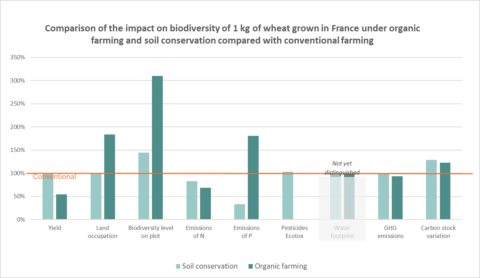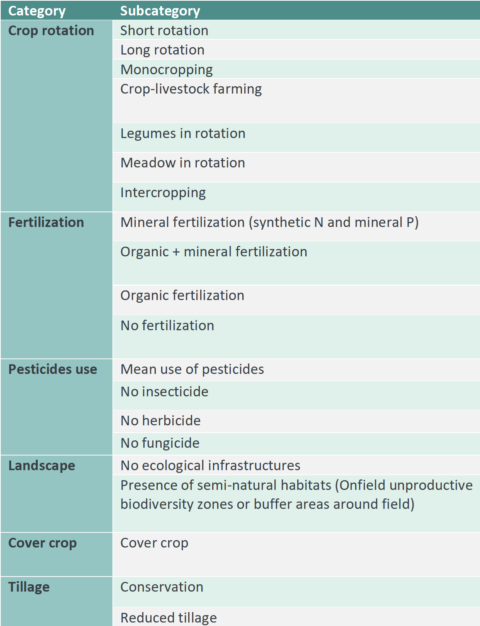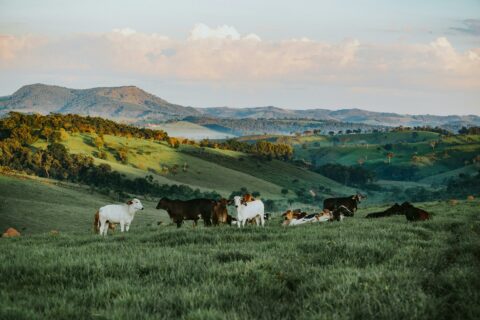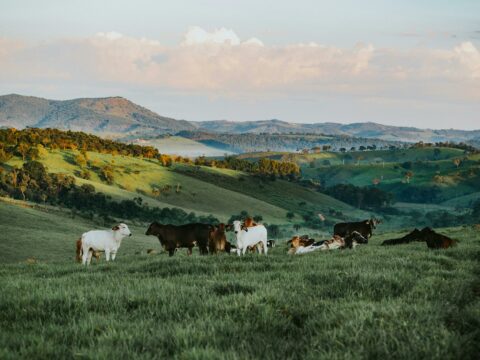Against a backdrop of growing tensions in the agricultural world, with the French Law on Agricultural Orientation emphasizing food sovereignty in France and debates on the European Green Deal revealing contrasting visions of the sector’s future, the place of agro-ecological practices in the agricultural transition must be defended. Unfortunately, current environmental impact assessment methods (including methods based on Life-Cycle Assessment) do not satisfyingly account for the numerous environmental benefits observed on the ground, thus hindering their integration into industry strategies. And yet, greater support from investors and major players in the agri-food sector is more necessary than ever to accompany the agroecological transition.
Presentation of the BFAT project
Faced with this situation, the BFAT (Biodiversity Footprinting for Agricultural Transition) project, initiated by I Care a year ago, aims to develop more relevant indicators for measuring the impact of farms and agricultural commodities on biodiversity. In this article, we look back at some of our initial findings.
BFAT uses methods and data from the scientific literature to meet the needs of companies and financial players. Its aim is to improve environmental impact assessment models (based on Life Cycle Assessment or aggregated biodiversity metrics such as PDF or MSA2) to better reflect the effects of agroecological practices implemented in the field.
To achieve this, an interdisciplinary team has been working together over the past 12 months. It brings together I Care & CDC Biodiversité, in partnership with agricultural systems experts from Biosphères and Agrosolutions. A scientific committee comprising researchers from the Muséum National d’Histoire Naturelle, INRAE and the University of Dublin is also supporting the project. Thanks to these contributions, BFAT now has a robust methodological basis for modelling the impacts on biodiversity of several agricultural commodities, depending on the production practices and systems deployed.
Integration in the research landscape
BFAT is part of a burgeoning research and innovation landscape: regular exchanges are taking place with Regen10, SBTN’s Land hub, the MNHN team working on quantifying biodiversity certificates, the GIS Revalim team and others. The results of BFAT can be mobilized by companies and financial players for a number of strategic uses. They aim to improve environmental reporting by providing robust and comparable indicators of biodiversity impacts. They can also guide purchasing and investment policies, by identifying agricultural practices to prioritize in order to reduce the ecological footprint of supply chains. Finally, they provide an evaluation framework to guide companies’ transition commitments and objectives, by aligning their strategies with biodiversity best practices.
One of the major thrusts of the project is to provide a comparative view of the contributions of different production methods (organic, regenerative, soil conservation, etc.) to pressures on biodiversity (land use change, pollution, greenhouse gas emissions, etc.). In particular, BFAT has modelled the contribution to pressures of different wheat production systems in the main producing countries (USA, Canada, Russia, Australia, Ukraine), enabling comparisons to be made between sets {country, production system}.
Example of results to date
Below are the pressures on biodiversity emitted by two French wheat production systems (soil conservation and organic farming), compared with a conventional system.
Figure 1 – Comparison of pressures on biodiversity per 1 kg of wheat produced, between 3 types of system: conventional, organic, soil conservation

In the specific case of wheat production in France, conservation agriculture, by reducing tillage, increases biodiversity on the farm plot, reduces nitrogen and phosphorus leakage into the aquatic environment, and increases soil carbon storage compared to conventional agriculture. However, the ecotoxic risks associated with the use of herbicides and pesticides remain the same, as does the carbon footprint.
In organic farming, the ecotoxic risk is much lower, and the ecological integrity of the agricultural plot is much better, as is the soil’s capacity to store carbon (linked in particular to the inclusion of meadows in the rotation) – although yields are almost half as high.
Figure 2 – Farming practices considered in BFAT (crops)

The models developed in BFAT are based on a detailed analysis of agricultural practices implemented on farms. They cover all stages of production, from soil preparation to harvesting, in order to capture the most influential levers of action.
Perspectives
In 2024, BFAT produced conclusive initial results for several agricultural sectors (wheat, beef, palm oil) and at different scales (landscape, regional, national). The ambition is now to apply this methodology to a wider range of concrete cases. To this end, the project team is now open to collaborations with companies wishing to quantify the biodiversity footprint of their operations or those of their suppliers.
By joining the BFAT project, everyone can actively contribute to research into the impacts of agriculture and to the development of assessment tools, thereby participating in the sector’s transition. The aim is to anticipate regulatory changes, acquire more precise methodologies to guide strategic choices and reinforce the credibility of commitments to sustainable agricultural practices.
To join the project, contact: Eliette Verdier.
[1] The Mean Species Abundance (MSA) indicator assesses the average abundance of species in an ecosystem compared with a natural reference state, while the Potentially Disappeared Fraction of species (PDF) estimates the fraction of species likely to disappear due to anthropogenic pressures. These biodiversity metrics are used to aggregate various impacts such as land use or pollution into aggregate biodiversity gain/loss impact indicators.






